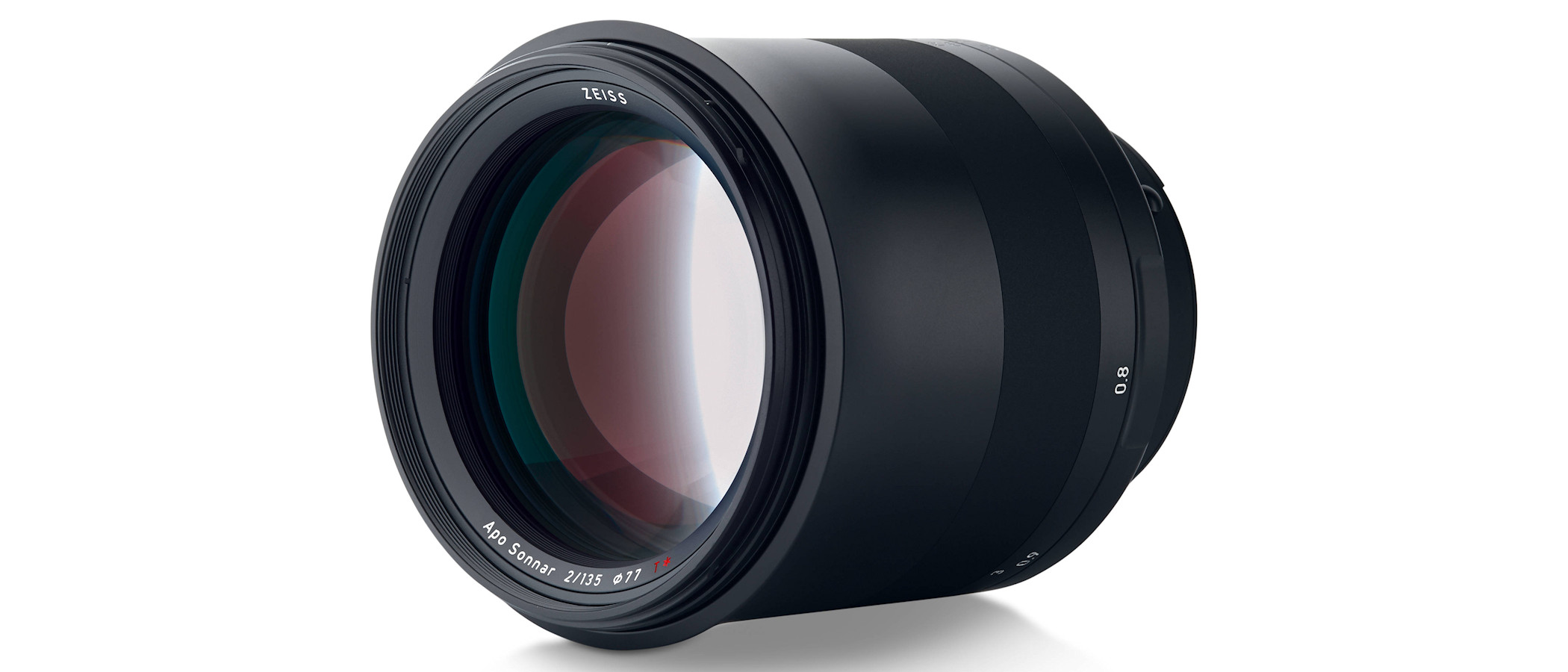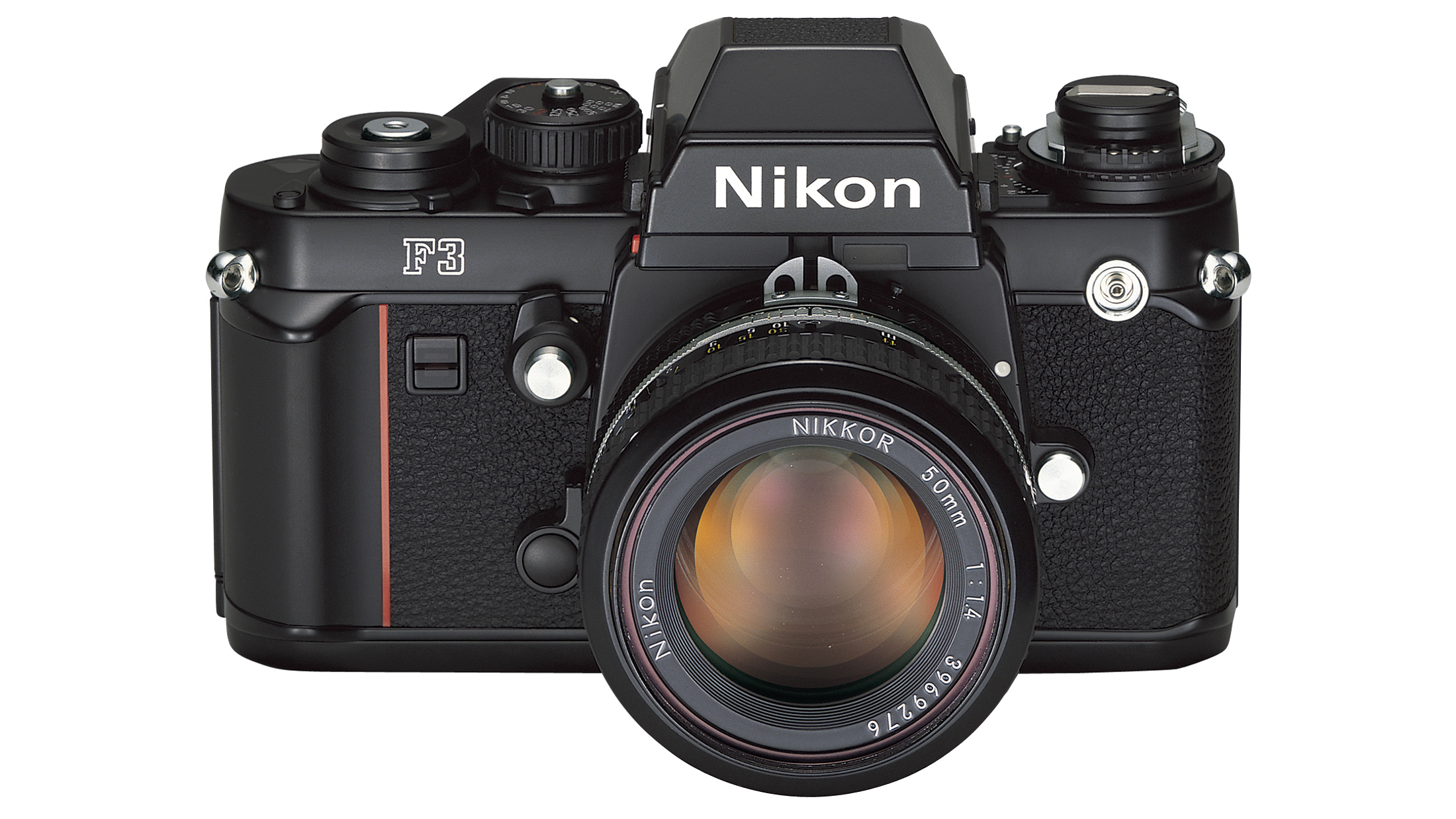Digital Camera World Verdict
I love the Zeiss Milvus 135mm F2’s focal length and fast aperture for portraiture and still life photography. It’s super-sharp and delivers deliciously smooth bokeh, with a natural roll-off between focused and defocused areas. As a manual-focus lens, however, accurate focusing can be a challenge with such a tight depth of field, and tracking the action of moving subjects can be tricky. It’s also very expensive to buy. Long story short, the lens is capable of delivering absolutely sumptuous image quality, if your manual focusing skills are up to the task.
Pros
- +
Sublime image quality
- +
Excellent build quality
- +
Good handling characteristics
Cons
- -
No autofocus
- -
Accurate focusing can be tricky
- -
Very expensive to buy
Why you can trust Digital Camera World
The Zeiss Milvus 135mm F2 has the longest focal length of any lens in the 11-strong Milvus family. It comes into its own for tight head shots and medium-distance portraiture, and also works well for still life, where you have the time to focus accurately with this manual-focus lens. The combination of focal length and f/2 aperture enables a really tight depth of field, so accurate focusing is often paramount. That can be tricky to achieve, especially if your subject is anything other than absolutely still. As well see, however, help is at hand.
Specifications
| Mount options | Canon EF, Nikon F |
| Lens construction | 11 elements in 8 groups |
| Angle of view | 19 degrees |
| Focus type | Manual focus |
| Minimum aperture | f/22 |
| Minimum focus distance | 0.8m |
| Maximum magnification | 0.25x |
| Filter size | 77mm |
| Dimensions | 90x115mm |
| Weight | 1,123g (EF) 1,059g (F) |
Key features
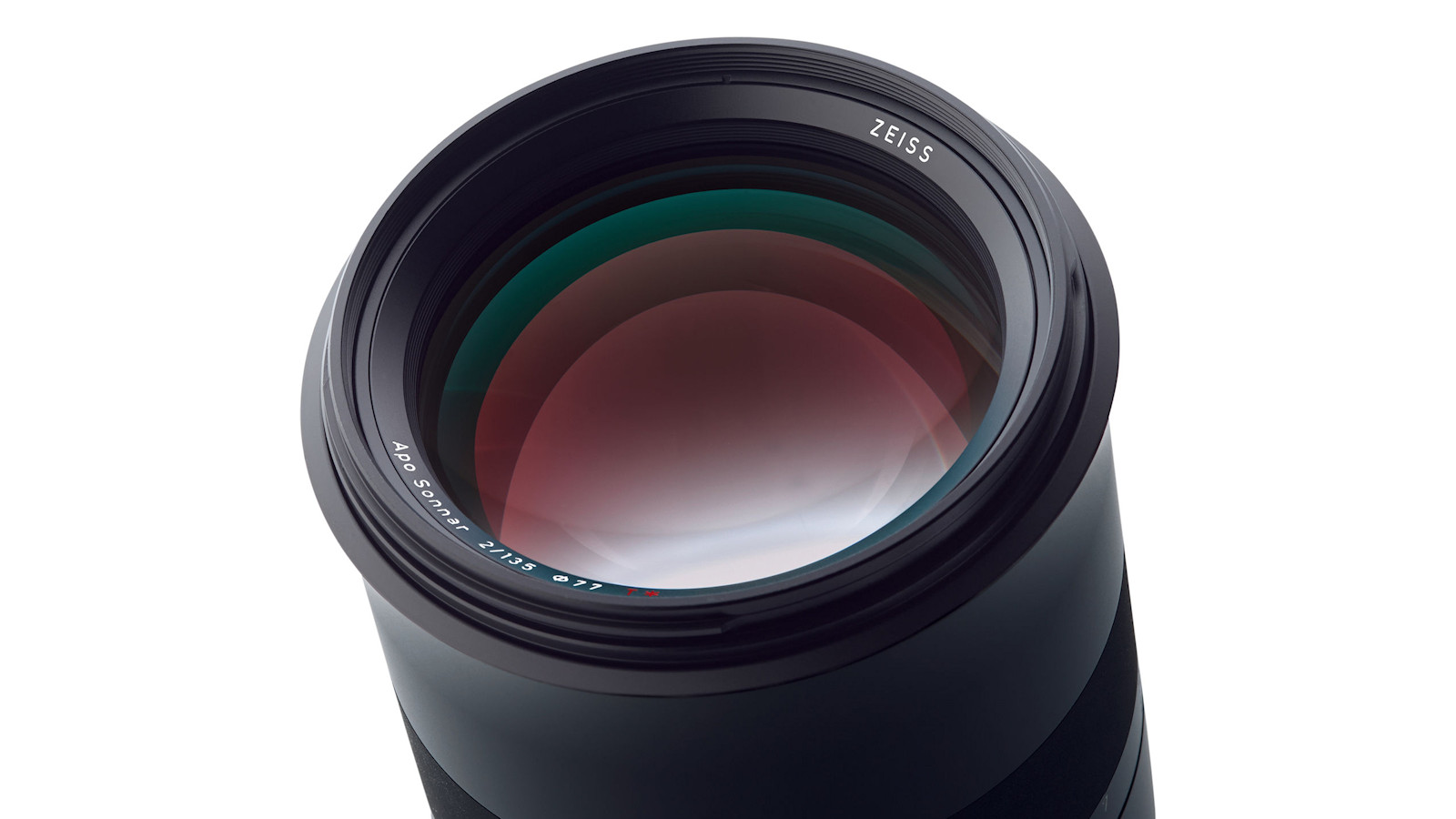
The absence of autofocus isn’t really a problem with ultra-wide-angle lenses in the Zeiss Milvus collection, like the 15mm, 18mm and 21mm primes. Combine a 135mm telephoto focal length with an f/2 aperture and depth of field becomes really tight at short to medium focus distances, making pinpoint focusing much more critical. Designed primarily for Canon and Nikon full-frame DSLRs, in ZE and ZF.2 editions respectively, focusing can be a struggle. DSLRs lack the split screen or microprism focusing aids typically featured in older 35mm film cameras. However, full electronics built into all Milvus lenses enable use of the focus confirmation lamp in the viewfinder of Canon DSLRs, as well as the additional directional indicator lamps in Nikon DSLRs.
Although designed and built for Canon and Nikon DSLRs, Milvus lenses are arguably easier to use on EOS R-system and Nikon Z-system mirrorless cameras, via Canon EF-EOS R and Nikon FTZ mount adapters respectively. You’ll get the added bonuses of a magnified viewfinder image for accurate manual focusing, as well as a focus peaking option to light up in-focus details.
A further indication of the tighter depth of field is that markers are only applied next to the focus distance scale for apertures of f/11 and f/16, rather than wider apertures, and the markers that are present are comparatively close together. On the plus side, the lens’s focus control ring works with a wonderfully fluid feel and offers very fine and precise adjustments, helped by a particularly long 268-degree throw. The focus range itself stretches from 0.8m to infinity, the closest setting equating to a distance of 0.52m (24.4 inches) between the front of the lens and the subject. This gives you a pretty generous maximum magnification ratio of 0.25x, small objects being reproduced on the image sensor at a quarter of life size.
More so than ever before, videography is muscling in on the stills photography party. The Nikon-mount edition of the lens obliges with click/de-click options for the aperture ring, although the Canon edition only enables aperture adjustment in click steps.
Build quality is everything I’d expect in a lens with such an up-market price tag. The black anodized barrel is exquisitely finished and the lens features extensive weather-seals. The rubberized focus ring is extremely tactile, while avoiding being cold to the touch and feeling a bit slippery in chilly shooting conditions.
Performance
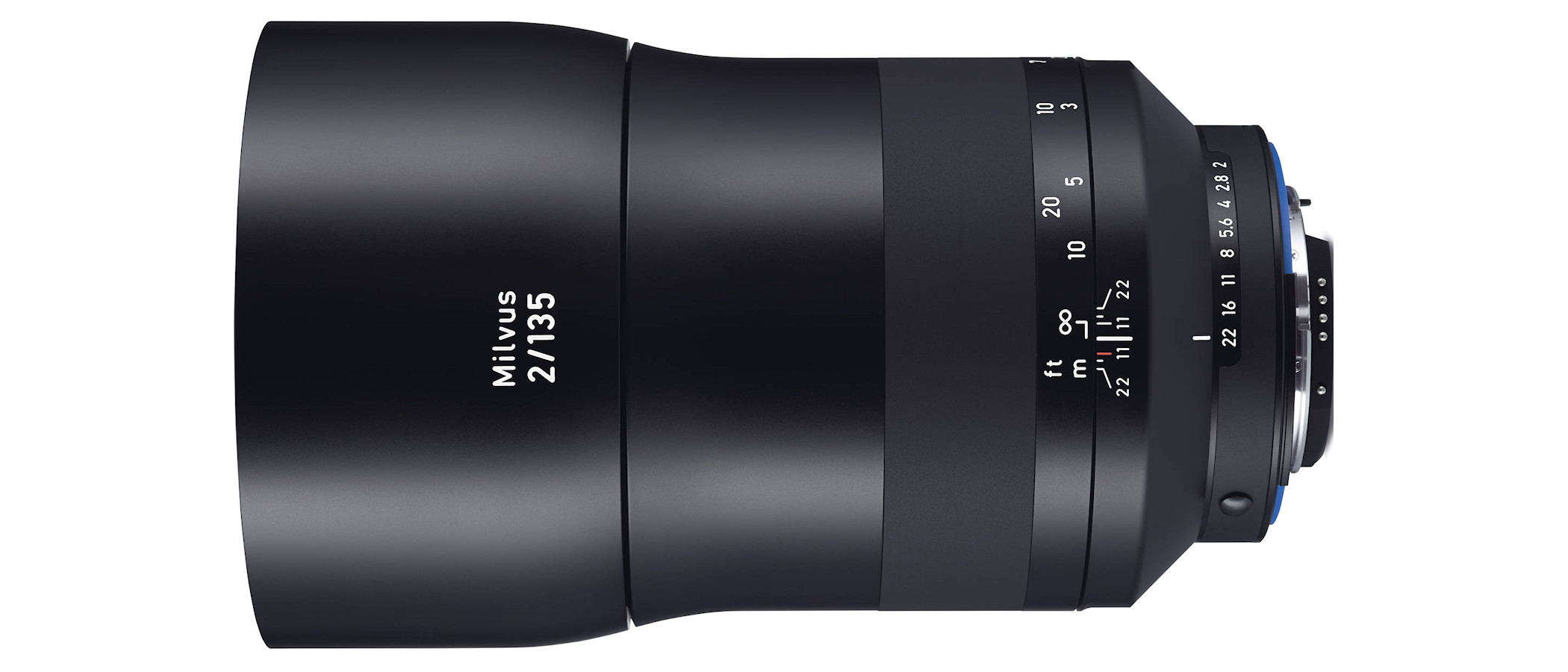
The Milvus 135mm F2 is designed on classic Zeiss Sonnar principles. There are 11 optical elements in total, which include four low dispersion elements to enhance contrast, clarity and color accuracy while minimizing chromatic aberrations. Highly acclaimed Zeiss T* anti-reflective coating is also applied to both sides of all elements, to keep ghosting and flare at bay, further boosting contrast and clarity. And that’s not all. Zeiss uses a labor-intensive process to manually coat the edges of all the optical elements with a pitch-black lacquer, as well as fitting light traps around mechanical components, to prevent unwanted internal reflections within the lens.
Sharpness is simply excellent, from the center of the frame to the extreme edges and corners, even when shooting wide-open at f/2. Naturally, however, that’s not the whole story. The quality of bokeh is arguably even more important with this type of lens. The Milvus 135mm excels here as well, with beautifully smooth bokeh and a really natural roll-off between focused and defocused areas, with minimal axial chromatic aberration (often referred to as ‘bokeh fringing’). Lateral chromatic aberration is also minimal, even at the extreme edges and corners of the frame, while distortion is negligible. All in all, image quality is absolutely beautiful.
Lab results
We run a range of lab tests under controlled conditions, using the Imatest Master testing suite. Photos of test charts are taken across the range of apertures and zooms (where available), then analyzed for sharpness, distortion and chromatic aberrations.
We use Imatest SFR (spatial frequency response) charts and analysis software to plot lens resolution at the center of the image frame, corners and mid-point distances, across the range of aperture settings and, with zoom lenses, at four different focal lengths. The tests also measure distortion and color fringing (chromatic aberration).
Sharpness:
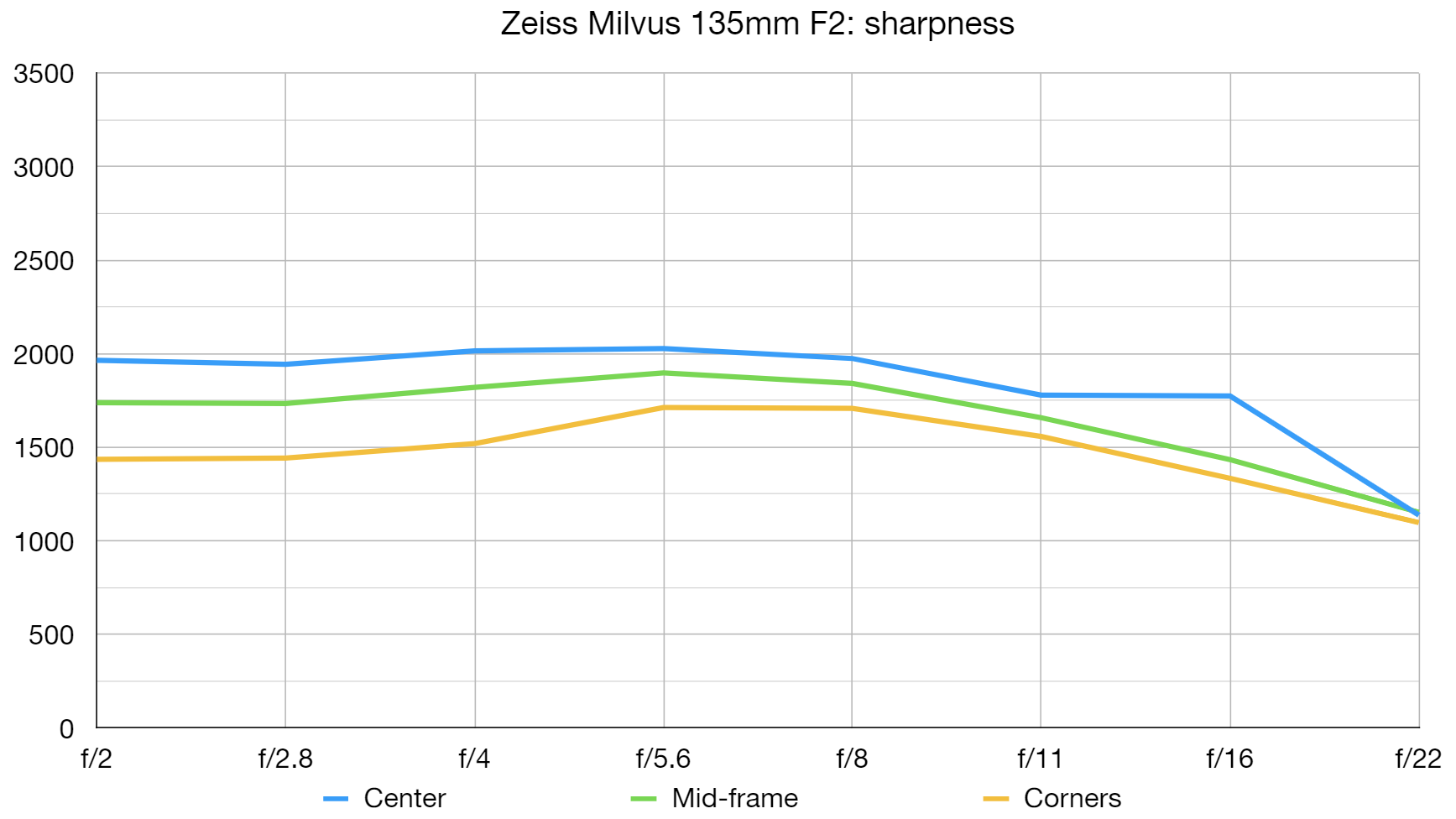
Sharpness is excellent right out to the extreme edges and corners of the image frame. It’s more likely that you’ll want to isolate subjects by blurring the surroundings with this type of lens, but it’s good to know that plenty of sharpness is on tap across the board, if and when you want it.
Fringing:
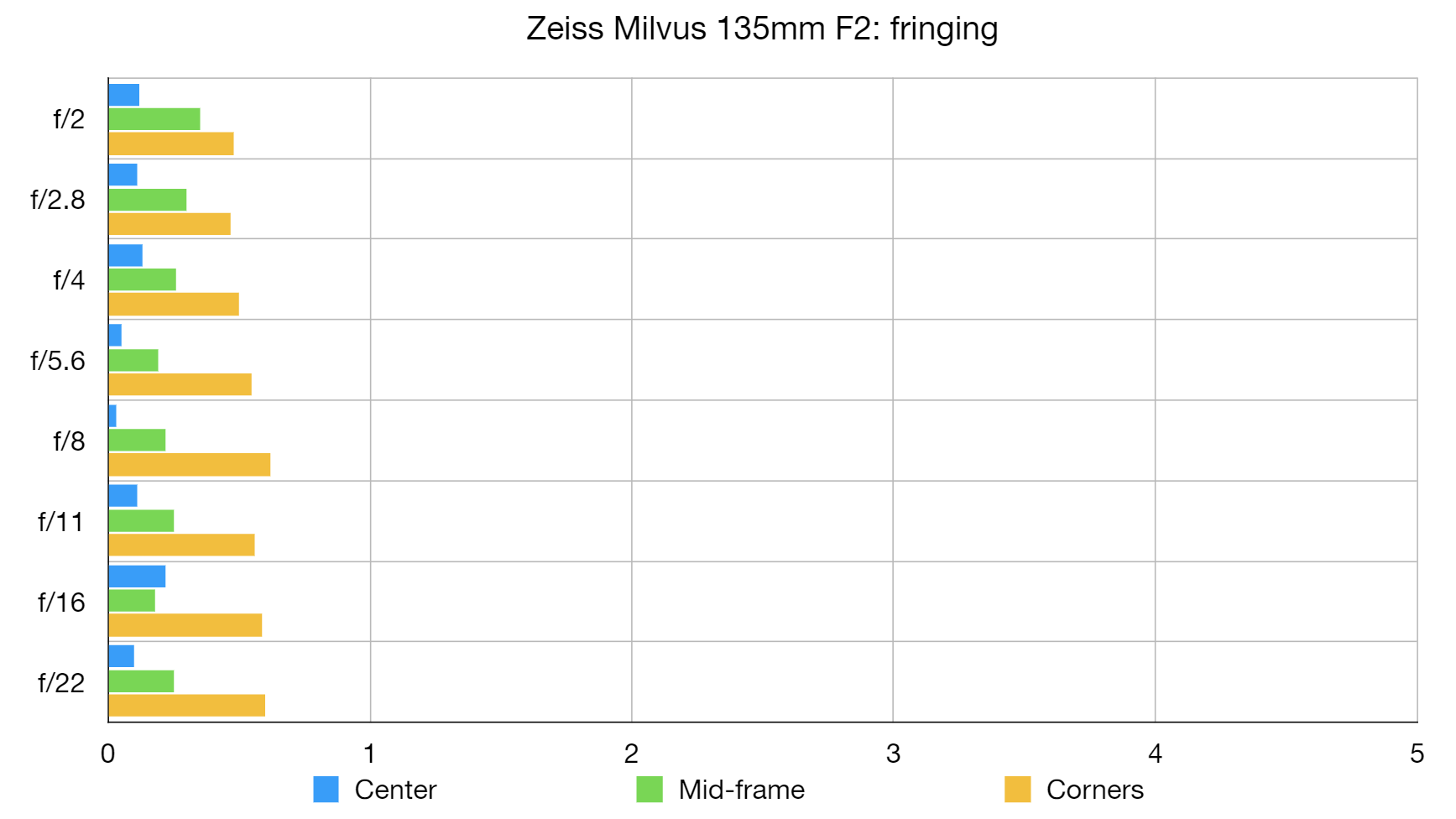
Both axial and lateral chromatic aberrations are very minimal in this lens, the latter being almost impossible to spot even towards the corners of the image frame.
Distortion: 0.16
There’s the slightest touch of pincushion distortion but, if you’re shooting real-world subjects rather than laboratory test charts, you’ll be hard pressed to notice it.
Verdict
I love the Zeiss Milvus 135mm F2’s focal length and fast aperture for portraiture and still life photography. It’s super-sharp and delivers deliciously smooth bokeh, with a natural roll-off between focused and defocused areas. As a manual-focus lens, however, accurate focusing can be a challenge with such a tight depth of field, and tracking the action of moving subjects can be tricky. It’s also very expensive to buy. Long story short, the lens is capable of delivering absolutely sumptuous image quality, if your manual focusing skills are up to the task.
- Other Zeiss Milvus lens reviews:
- Zeiss Milvus 35mm f/2 review
- Zeiss Milvus 50mm f/1.4 review
- Zeiss Milvus 15mm F2.8 review
- Zeiss Milvus 21mm f/2.8 review
- Zeiss Milvus 18mm f/2.8 review
Matthew Richards is a photographer and journalist who has spent years using and reviewing all manner of photo gear. He is Digital Camera World's principal lens reviewer – and has tested more primes and zooms than most people have had hot dinners!
His expertise with equipment doesn’t end there, though. He is also an encyclopedia when it comes to all manner of cameras, camera holsters and bags, flashguns, tripods and heads, printers, papers and inks, and just about anything imaging-related.
In an earlier life he was a broadcast engineer at the BBC, as well as a former editor of PC Guide.
